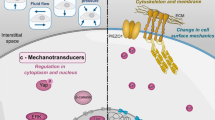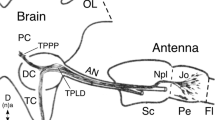Abstract
THE protein XTC-MIF, a Xenopus homologue of activin A and a potent mesoderm-inducing factor1, can induce responding animal pole explants to form several different cell types in a dose-dependent manner, higher doses eliciting more dorso-anterior tissues2. This graded response, characteristic of classically postulated morphogens3, may underlie pattern formation, but the response of intact animal caps to XTC-MIF provides only a crude indication of trends. Here we report the effects of XTC-MIF on dispersed blastomeres rather than intact animal caps. Under these conditions, responding cells distinguish sharply between doses of pure XTC-MIF differing by less than 1.5-fold. Two different response thresholds have been found, defining three cell states. This suggests that XTC-MIF has an instructive effect. Notochord and muscle are both induced in the same narrow dose-range. Mixing treated with untreated cells does not seem to shift the dose thresholds, showing that at least some cells can stably record the received dose of inducing factor.
Similar content being viewed by others
References
Smith, J. C., Price, B. M. J., Van Nimmen, K. & Huylebroeck, D. Nature 345, 729–731 (1990).
Green, J. B. A., Howes, G., Symes, K., Cooke, J. & Smith, J. C. Development 108, 173–183 (1990).
Wolpert, L. Development Suppl. 3–12 (1989).
Cooke, J., Smith, J. C., Smith, E. J. & Yaqoob, M. Development 105, 549–558 (1987).
Symes, K., Yaqoob, M. & Smith, J. C. Development 104, 609–618 (1988).
Godsave, S. F. & Slack, J. M. W. Devl Biol. 134, 486–490 (1989).
Gurdon, J. B. Nature 336, 772–774 (1988).
Savage, R. & Phillips, C. R. Devl Biol. 133, 157–168 (1989).
Sharpe, C. R., Fritz, A., De Robertis, E. M. & Gurdon, J. B. Cell 50, 749–758 (1987).
Dixon, J. E. & Kintner, C. R. Development 106, 749–757 (1989).
Cooke, J. J. Embryol. exp. Morph. 76, 95–114 (1983).
Kintner, C. R. & Melton, D. A. Development 99, 311–325 (1987).
Smith, J. C. Curr. Op. Cell Biol. 1, 1061–1070 (1989).
Smith, J. C., Cooke, J., Green, J. B. A., Howes, G. & Symes, K. Development Suppl. 149–159 (1989).
Driever, W. & Nüsslein-Volhard, C. Cell 54, 95–104 (1988).
Driever, W. & Nüsslein-Volhard, C. Nature 337, 138–143 (1989).
van den Eijnden-Van Raaij, et al. Nature 345, 732–734 (1990).
Ruiz-i-Altaba, A. & Melton, D. A. Nature 341, 33–38 (1989).
Mohun, T. J., Brennan, S., Dathan, N., Fairman, S. & Gurdon, J. B. Nature 311, 716–721 (1984).
Jonas, E. Sargent, T. D. & Dawid, I. B. Proc. natn. Acad. Sci. U.S.A. 82, 5413–5417 (1985).
Krieg, P. A., Varnum, S. M., Wormington, W. M. & Melton, D. A. Devl Biol. 133, 93–100 (1989).
Smith, J. C. & Watt, F. M. Differentiation 29, 109–115 (1985).
Kintner, C. R. & Brockes, J. P. Nature 308, 67–69 (1984).
Author information
Authors and Affiliations
Rights and permissions
About this article
Cite this article
Green, J., Smith, J. Graded changes in dose of a Xenopus activin A homologue elicit stepwise transitions in embryonic cell fate. Nature 347, 391–394 (1990). https://doi.org/10.1038/347391a0
Received:
Published:
Issue Date:
DOI: https://doi.org/10.1038/347391a0
- Springer Nature Limited
This article is cited by
-
Temporal transcriptomic profiling reveals dynamic changes in gene expression of Xenopus animal cap upon activin treatment
Scientific Reports (2021)
-
The Evx1/Evx1as gene locus regulates anterior-posterior patterning during gastrulation
Scientific Reports (2016)
-
Molecular specification of germ layers in vertebrate embryos
Cellular and Molecular Life Sciences (2016)
-
Multicellular Mathematical Modelling of Mesendoderm Formation in Amphibians
Bulletin of Mathematical Biology (2016)
-
Activin A balance regulates epithelial invasiveness and tumorigenesis
Laboratory Investigation (2014)





